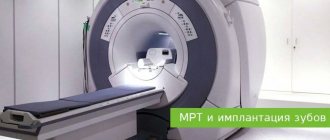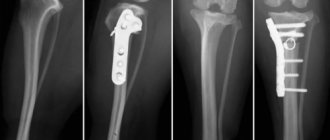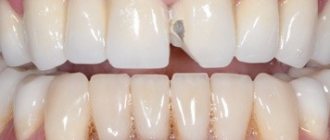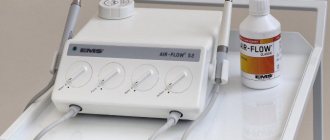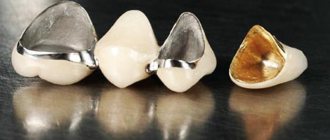Modern technologies in medicine make it possible to detect the slightest disturbances in the human body, but for this it is important to comply with all indications and contraindications for a specific procedure. Magnetic resonance imaging is one of these tests that can give an accurate picture of your condition. Before carrying out it, the specialist is obliged to collect a complete medical history of the patient, including regarding the presence of any metal structures in organs and teeth. This is required in order to obtain accurate data after the procedure. In some cases, the presence of metal becomes a contraindication to examination. You can find out below whether they are metal-ceramic crowns.
Features of MRI in human treatment
Magnetic resonance imaging is a relatively new method for diagnosing serious pathologies in the human body. Its essence lies in the effect of a special magnetic field on enzymes that are found in human tissues and mucous membranes. When conducting an examination, you must be extremely careful, since each organ is diagnosed using its own method.
This is due to the fact that each tissue of the system has its own number of hydrogen atoms. It is they, under the influence of a magnetic source, that make it possible to obtain information about the presence or absence of a problem. The tomograph picks up the received signals, and the doctor deciphers them. During diagnostics, it is important to remove all possible interference, which can be even small metal and metal-ceramic elements.
Attention! The procedure itself can take quite a long time, the average diagnostic time is 40 minutes. It all depends on the tissues that need to be assessed. If the patient is afraid of closed spaces, the diagnosis is carried out in an open apparatus.
When can you do an MRI with metal-ceramics?
About 5 years ago, any metal-ceramic crowns ceased to be a hindrance during magnetic resonance therapy. This is due to the fact that they are made from inert alloys. Such components do not interact in any way with the magnetic field, and therefore cannot come into resonance. This allows you to examine any organ of the body, including the head and jaw. There will not be even the slightest glare in the pictures.
But at the same time, it is necessary to pay attention to the alloys from which the fasteners for the crowns are made. In exceptional cases, they are made from alloys that give false results on MRI. But since the fasteners are small, they will not heat up much during diagnostics, which may make it possible to carry out the required examination. The problem can only arise when diagnosing the tissues of the jaw and teeth.
Attention! Since the patient cannot independently answer what metals are used in his design, the doctor will refer the patient to an orthodontist. The dentist must give an opinion on what alloys were used in the manufacture of the crowns. Based on the information received, a decision will be made on a possible examination.
How does a patient with metal ceramics feel during the procedure?
During a diagnostic examination in the presence of metal-ceramic structures, the patient will not experience any discomfort, much less acute pain or other painful sensations. The patient's life is also in perfect order and nothing threatens her.
If for one reason or another you are denied an examination, this will be due to the fact that your metal-ceramic crowns will greatly distort the final result. This will happen due to the resonance of the metal elements of the dental structure and the magnetic field of the tomograph. As a result, the doctor will either not be able to see the tissues he needs, or marks will appear on them that will give a false diagnosis.
Attention! Patients with metal-ceramic crowns are often denied examination due to the high cost of MRI. Since it is difficult to predict the final result, some laboratories prefer to refuse treatment to the patient, especially when it is carried out on a budgetary basis, when it is not the patient who pays, but the clinic.
Possible complications and precautions
If there are electronic implants, the magnetic field can disable them, this can seriously harm the patient or even lead to the death of the person. Carrying out an MRI examination for people with coronary walls and clips on the vessels can provoke bleeding and even lead to death. Endoprostheses made of magnetic alloys can move during MRI and heat up, causing internal burns.
Metal prostheses produce noise in a magnetic field and cause artifacts in the image, thereby distorting the image of surrounding tissues. There is no use in trying to obtain an MRI image of an artificial joint or bone with fonts or plates.
When is examination completely prohibited?
As mentioned above, regardless of when you had a metal-ceramic crown installed, a specialist will refer you to an orthodontist. This is required in order to find out what metal the teeth were made of. If the structure contains alloys such as iron, cobalt or nickel, the procedure is strictly prohibited. They interact very actively with the magnetic field, which can cause very sad consequences.
You can find them below.
- Due to resonance, the alloys identified above become very hot under the influence of magnets, which can lead to burns of the oral mucosa.
- When examining the heart and head, crowns may fly off, especially if there is poor contact with the main structure. The magnet will simply pull them out of their places, which can lead to painful shock and, accordingly, the need for urgent hospitalization.
- The crowns may move slightly out of place, which will require them to be re-fixed, which is quite expensive.
- An incorrect diagnosis will be made, which is especially dangerous if the presence of an oncological tumor is suspected. The initial stages of cancer are difficult to detect with other equipment.
If it is necessary to conduct an MRI examination, and the patient has complete contraindications, it is necessary to remove all metal-ceramic crowns that contain prohibited metal. Most often, such manipulations have to be undertaken if the patient suffers from severe pain in the jaw or teeth. During such examinations, it is necessary to remove the entire structure so that it allows identifying pathology.
Attention! Metal ceramics containing iron, cobalt and nickel are not a contraindication if you want to check the condition of the spinal region, abdominal systems and pelvic organs. In this case, they do not come into contact with the magnetic field in any way and do not distort the result. The procedure is absolutely safe.
How long does a crown stay on a tooth?
The service life of entire crowns primarily depends on the material. So:
- metal ones last an average of 5 years;
- metal-ceramic – 8-10 years;
- ceramic and zirconium dioxide - 10-15 years and above.
The duration of wearing dentures is also affected by: how well the supporting tooth was treated and ground, the skill of the dental technician and the quality of oral care. The dentist is visited every six months to remove plaque from products and adjust them. And after 7-10 years, most crowns become unusable and are replaced with new ones.
But loose and broken dentures will not last long: from several days to a couple of weeks. Therefore, people contact the clinic immediately: the faster the doctor adjusts or replaces the bridge or crown, the greater the chance of saving the abutment tooth.
This is how a crown is sawed
What can replace MRI?
If a patient is contraindicated to undergo magnetic resonance imaging, and he does not want to remove metal-ceramic crowns, you can try to find an alternative. To do this, the following methods can be used, which can be found in the table.
| Procedure | Information content |
| Second place in terms of information content | |
| Relatively effective, sometimes requires confirmation with MRI | |
| Effective in some cases | |
| Not very informative, used only in combination | |
| It is advisable to use only in combination. |
Attention! Despite the possibility of using an alternative option, only magnetic resonance therapy can give the most accurate result, identifying even the slightest abnormalities that are not yet visible on ultrasound and any other tests.
Regardless of how many metal-ceramic crowns you have and what part of the body you are undergoing an MRI procedure for, you should always warn your doctor about the presence of a foreign body in your teeth.
If it is impossible to undergo an examination, the specialist will prescribe other procedures that can give an accurate picture of the state of health. If magnetic resonance imaging cannot be done, a computer diagnostic method is usually used.
Restoration methods
Shallow cracks and abrasions are eliminated by polishing the ceramic surface. Small chips are restored using light-curing composites. This is the most common way to restore an orthopedic system without replacing it. Restoration of metal ceramics includes the following stages:
- The extension area is isolated from moisture;
- grind the chipped area to improve the adhesion of materials;
- after drying, a composite material is applied to the defect layer by layer, each layer is illuminated with a UV lamp;
- Upon completion of the extension, the area is ground and polished to give a natural shine, the appearance of a crown.
Repairing a metal-ceramic chip takes about 30 minutes. Restoration extends the life of the prosthesis, restores the original appearance, and returns the aesthetics and functionality of the dentition. However, repair of chips on metal ceramics is carried out without a guarantee, since there are many negative factors that affect the service life of the restoration.
If a metal-ceramic crown breaks off, there is no need to throw away the fragment. It is likely that the doctor will be able to use it to restore the integrity of the lining. In case of extensive damage, when a significant part of the metal is exposed, or chips of the lining of the contact surfaces, another option is required - replacing the damaged structure with a new one.
